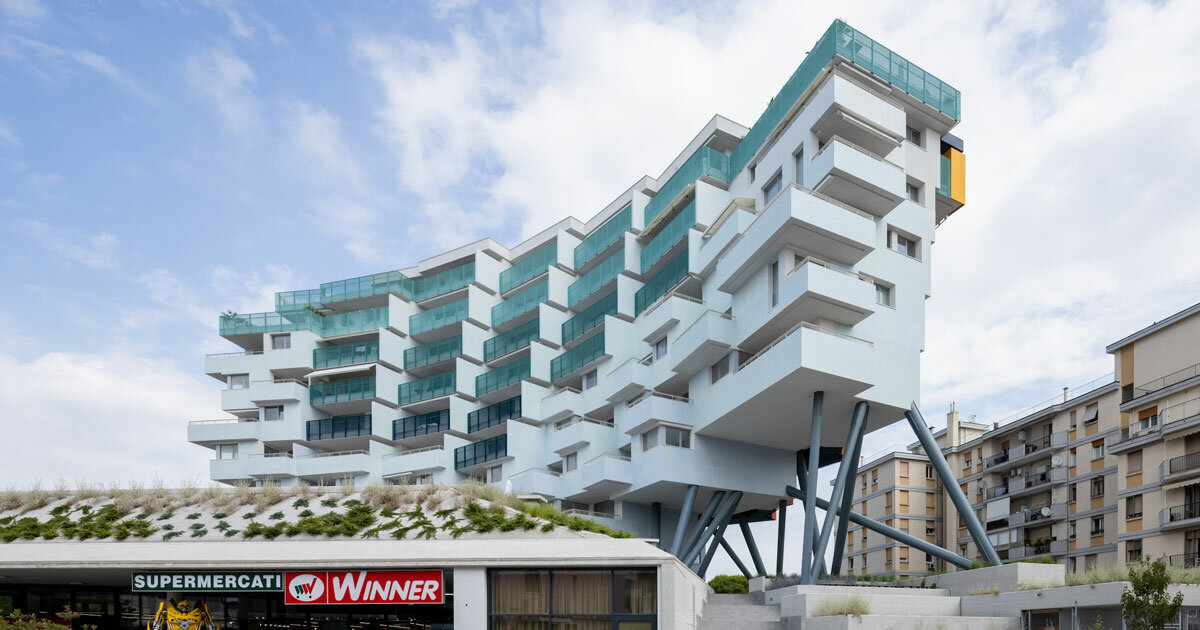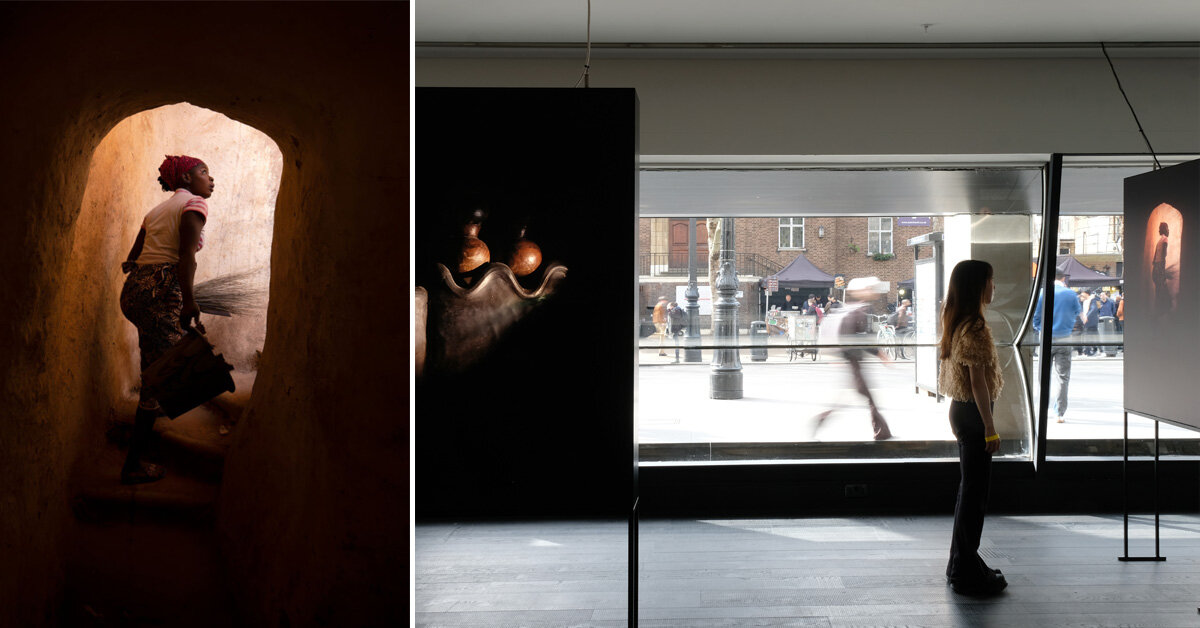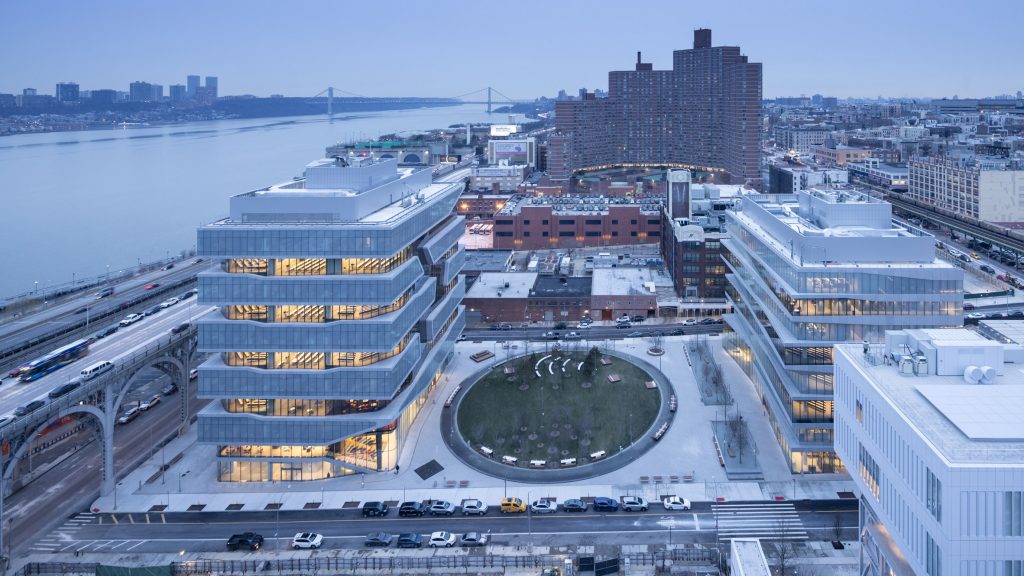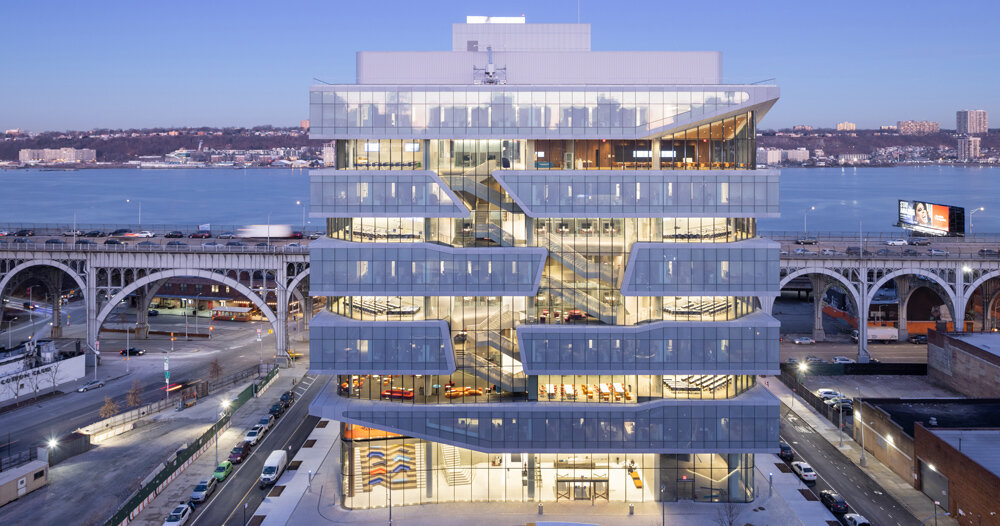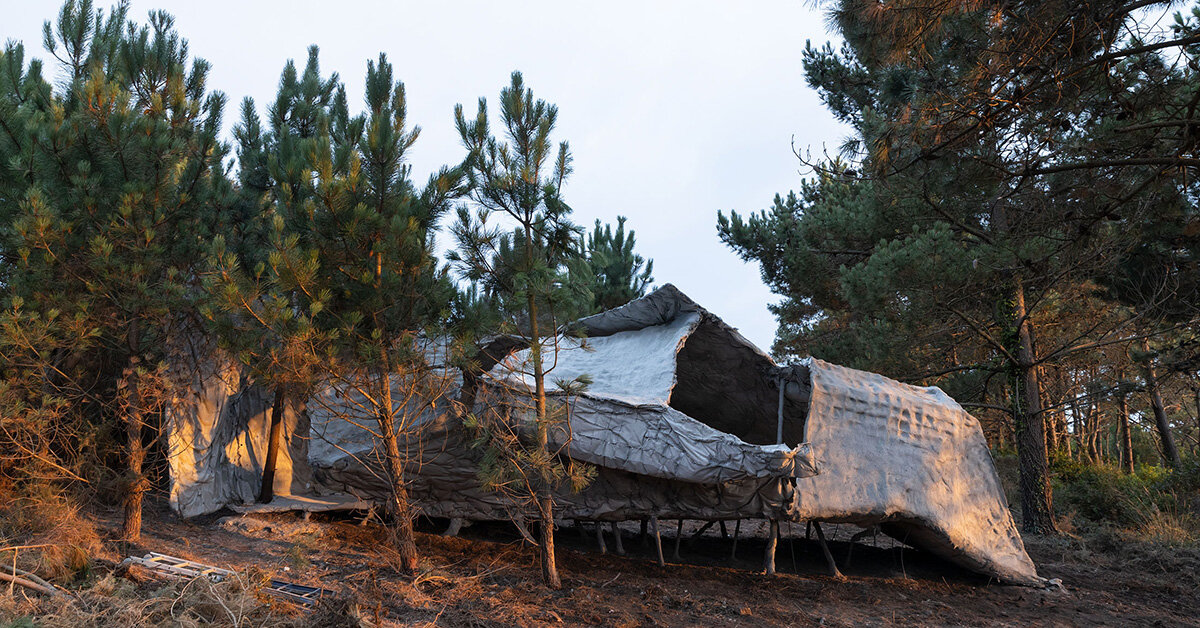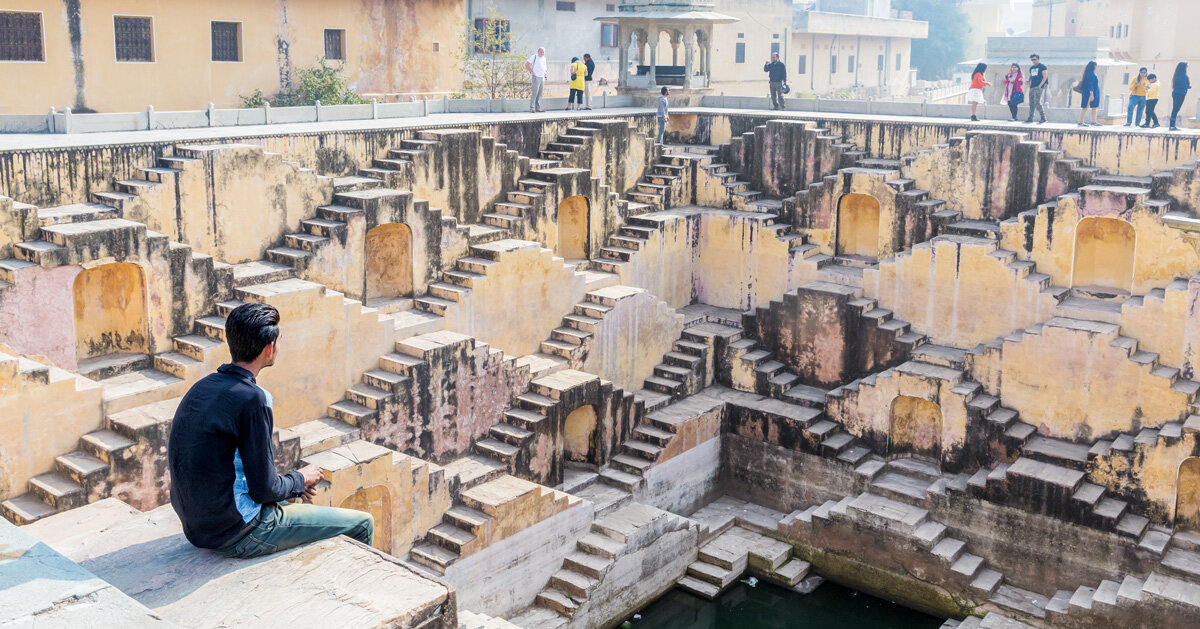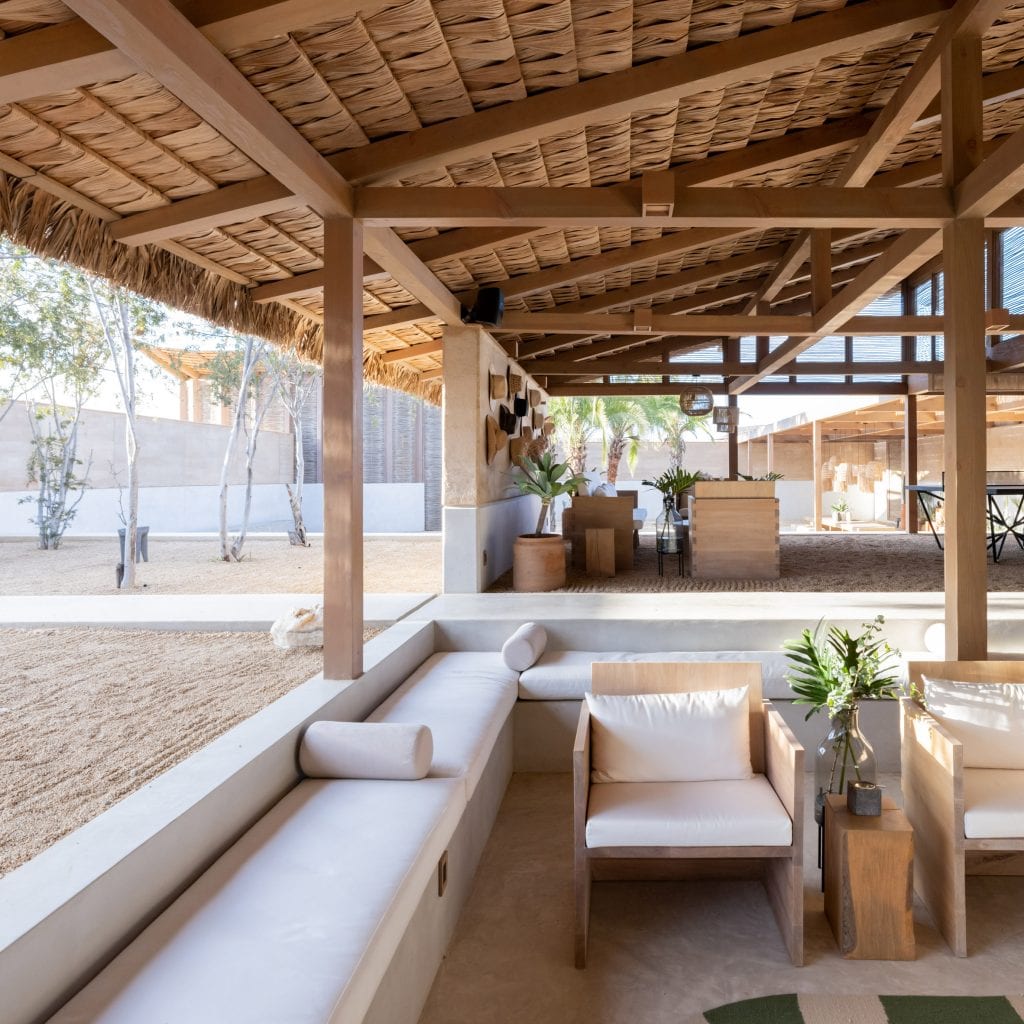#iwanbaan
Diller Scofidio + Renfro creates pair of Columbia Business School buildings with "layer-cake design"
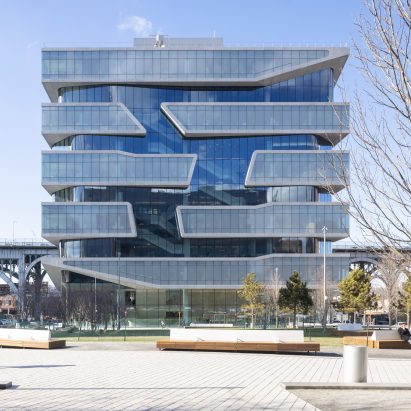
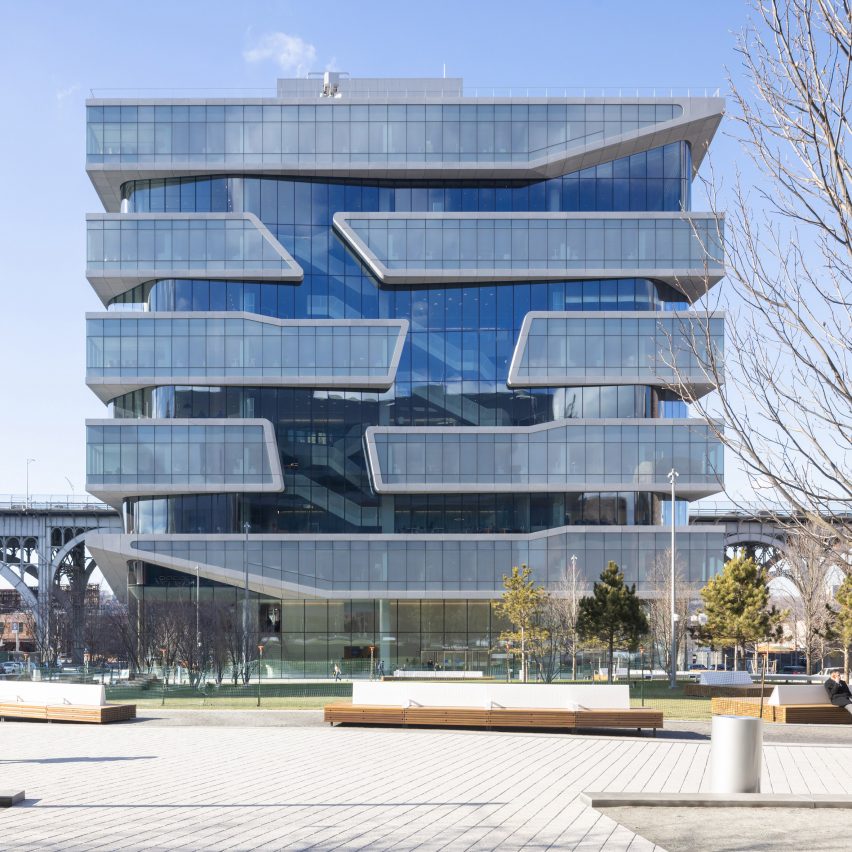
Architecture firm Diller Scofidio + Renfro has completed two buildings on the Manhattanville campus of Columbia University's School of Business in New York City.
The two buildings – Henry R Kravis Hall and David Geffen Hall – were designed in collaboration with FXCollaborative for Manhattanville, a 17-acre (6.9-hectare) site north of the university's existing campus in Upper Manhattan.
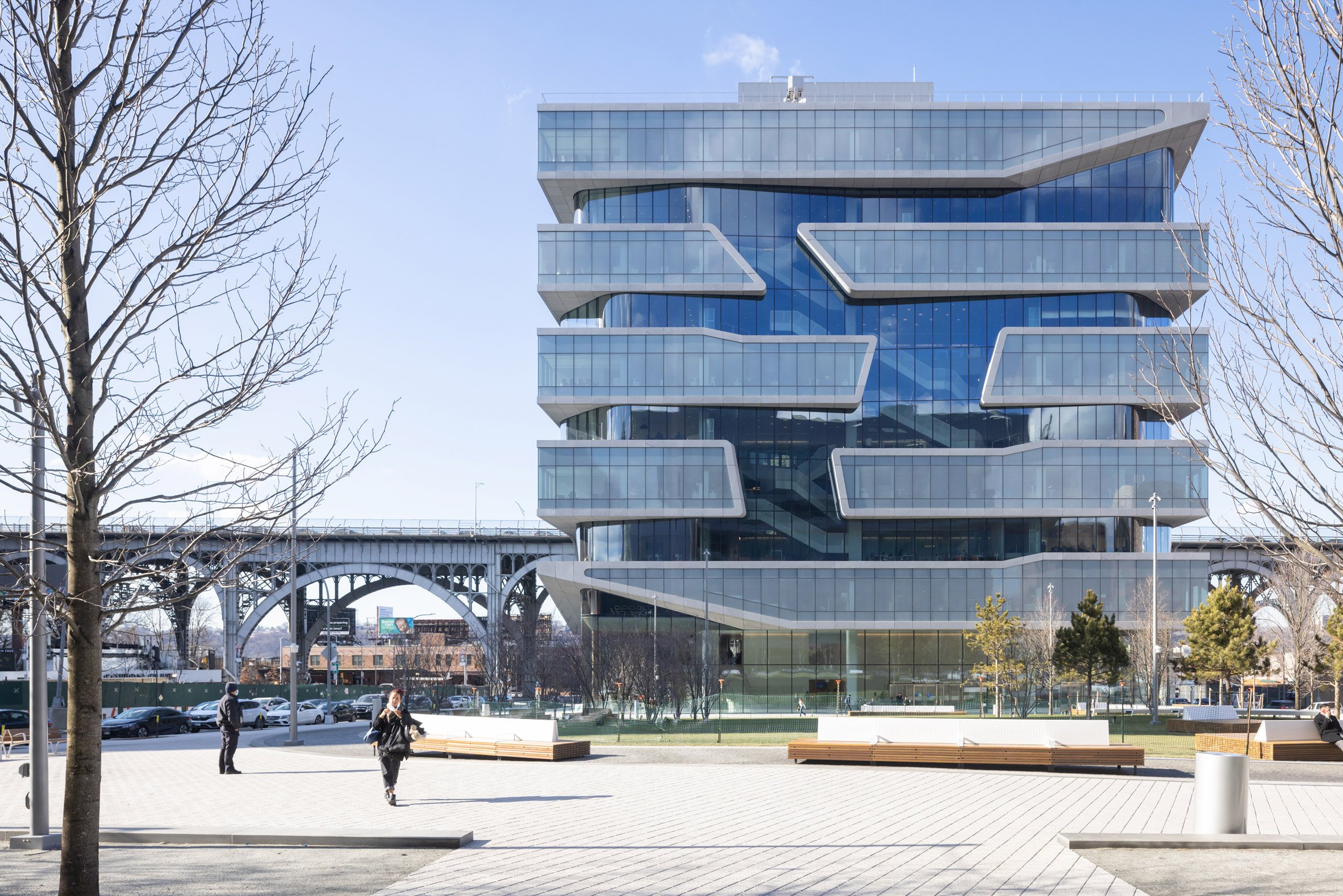 Kravis Hall is one of two Diller Scofidio + Renfro-designed buildings for the Columbia Business School
Kravis Hall is one of two Diller Scofidio + Renfro-designed buildings for the Columbia Business School
All buildings for this expanded campus follow a master plan by Renzo Piano Building Workshop and Skidmore, Owings & Merrill.
"Renzo Piano's Manhattanville masterplan stipulated an urban layer at the ground level would be permeable to the public, extending the city grid through the campus," said Charles Renfro, partner-in-charge for Diller Scofidio + Renfro. "That was a perfect starting point for us because our studio always advocates for these fuzzier distinctions between public space and institutions".
"Modern business practice is increasingly collaborative and non-siloed, and is predicated on an expanded adoption of technology, data, and advanced analytics alongside the fundamentals of traditional business education," said dean Costis Maglaras. "Our new, open, light-filled spaces reflect this reality."
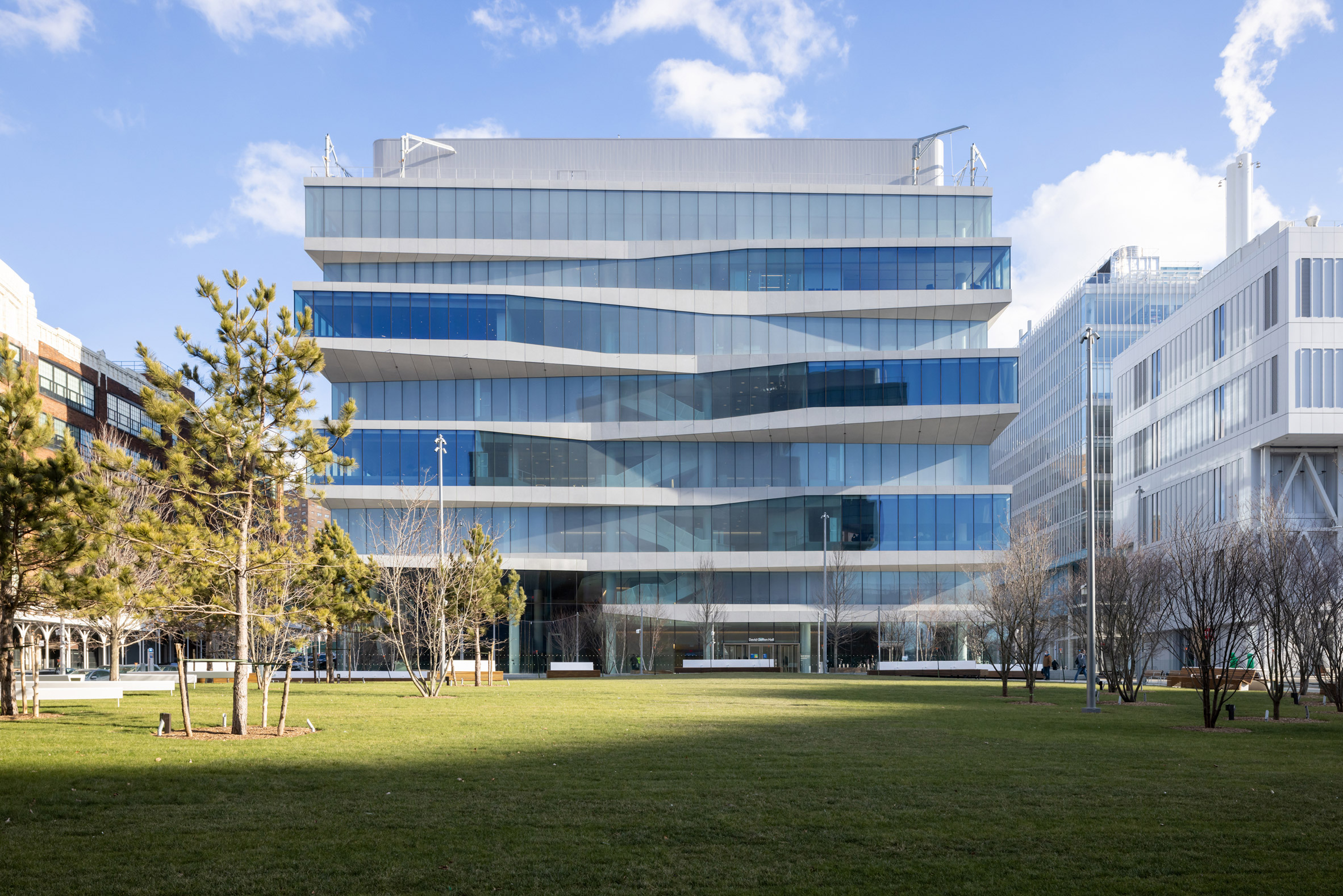 The second building, Geffen Hall, has gradient shades of glass across the facade
The second building, Geffen Hall, has gradient shades of glass across the facade
Both buildings have facades primarily of glass and were constructed with what the studio called a "layer-cake design".
The two buildings sit across from a public park known as The Square designed by US studio James Corner Field Operations. With two groves of trees, it is the largest public park on any of Columbia's campuses.
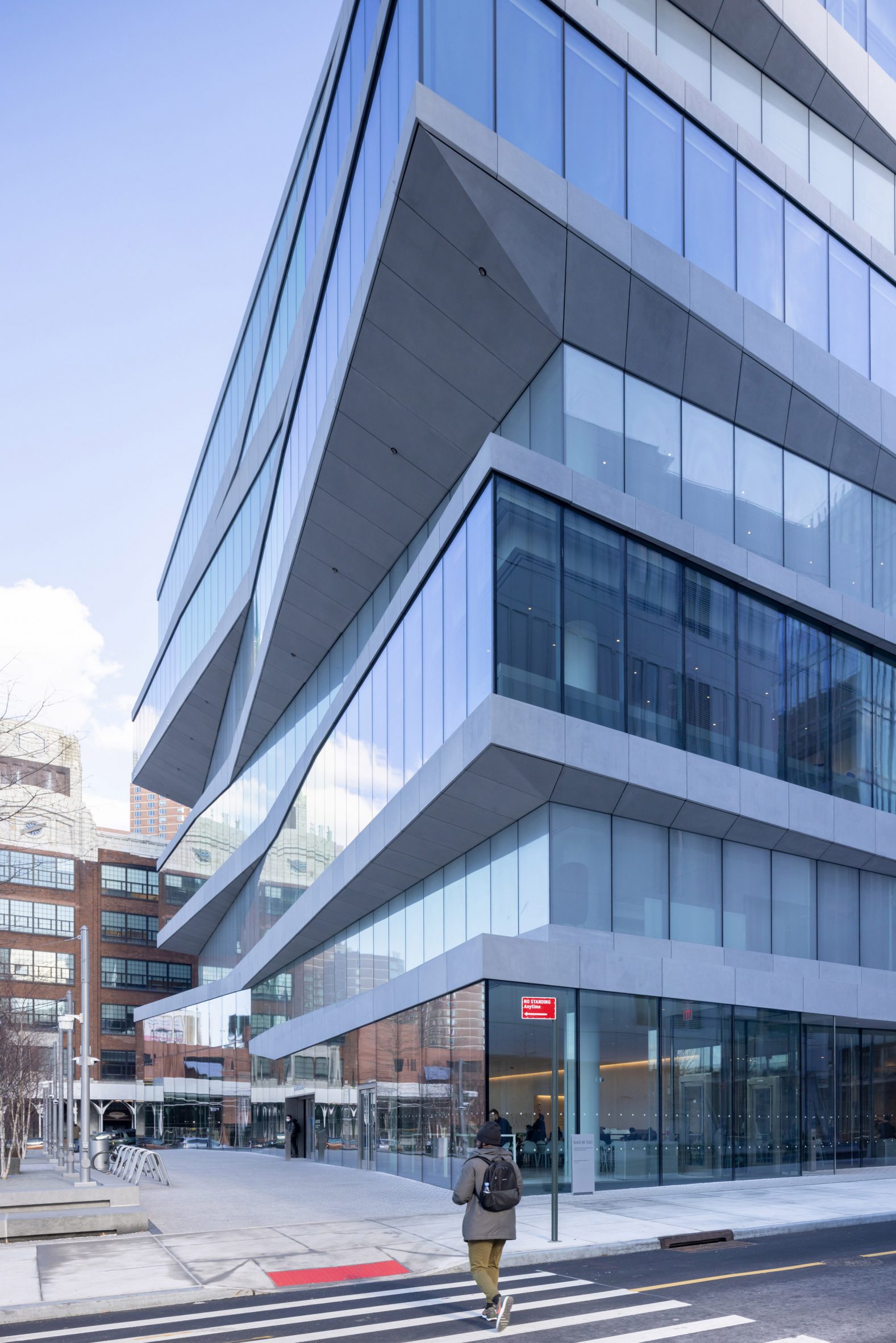 Geffen Hall's storeys are offset at angles to one another
Geffen Hall's storeys are offset at angles to one another
"A network of stairs and social spaces emerges from the ground floor, programmed with public spaces that welcome the community," said Refro.
"These networks weave through both buildings in dialogue across The Square, animating each facade with the school's daily activities."
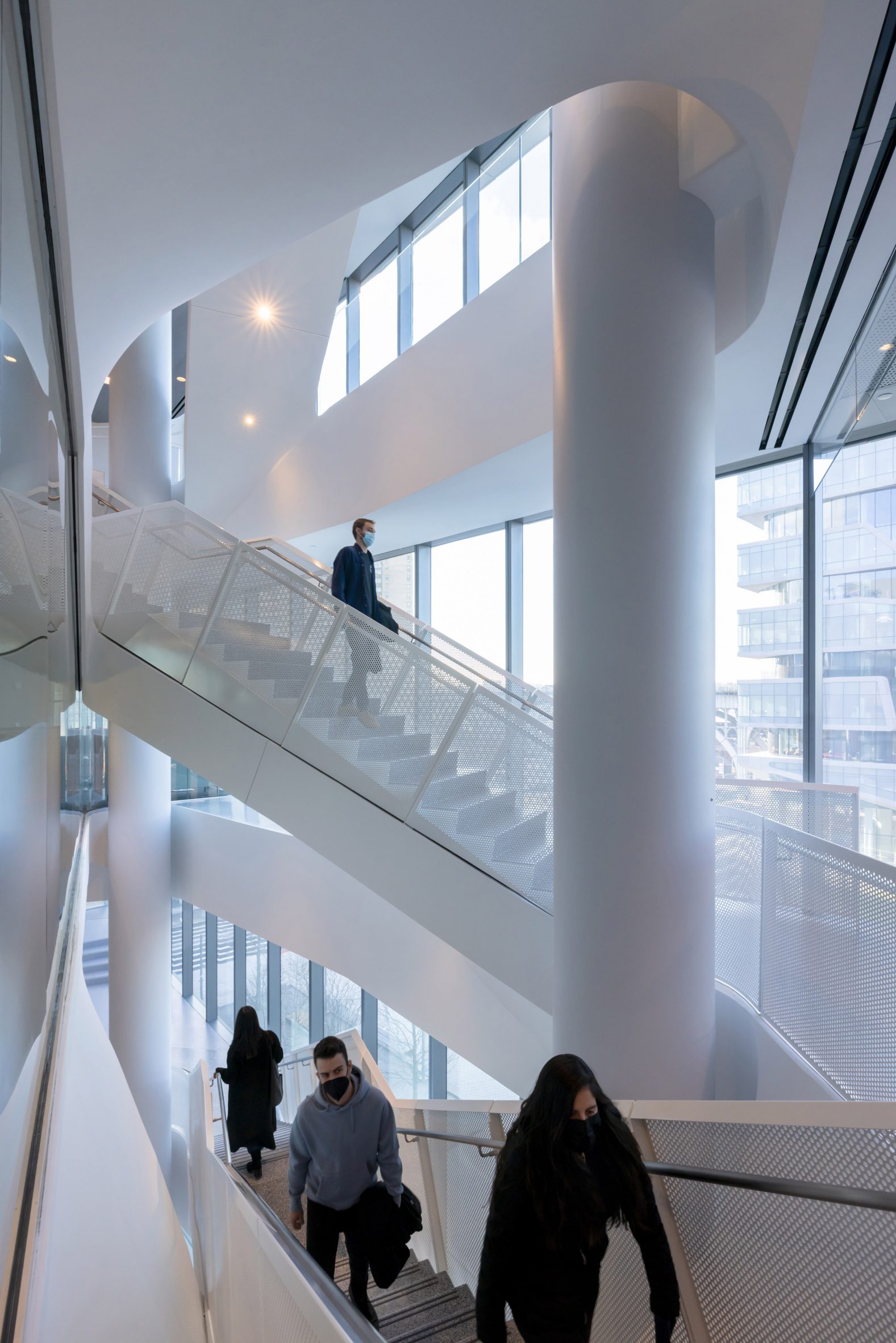 The stairways of Geffen Hall form a sculptural network
The stairways of Geffen Hall form a sculptural network
The 11-storey Kravis Hall has two depths in the facade. The ground floor and student areas are inset from the floor plate, while the faculty floors stick out from the building and have fritted glass.
The two materials show the "interweaving of student, faculty, and administrative spaces" according to a release from Columbia.
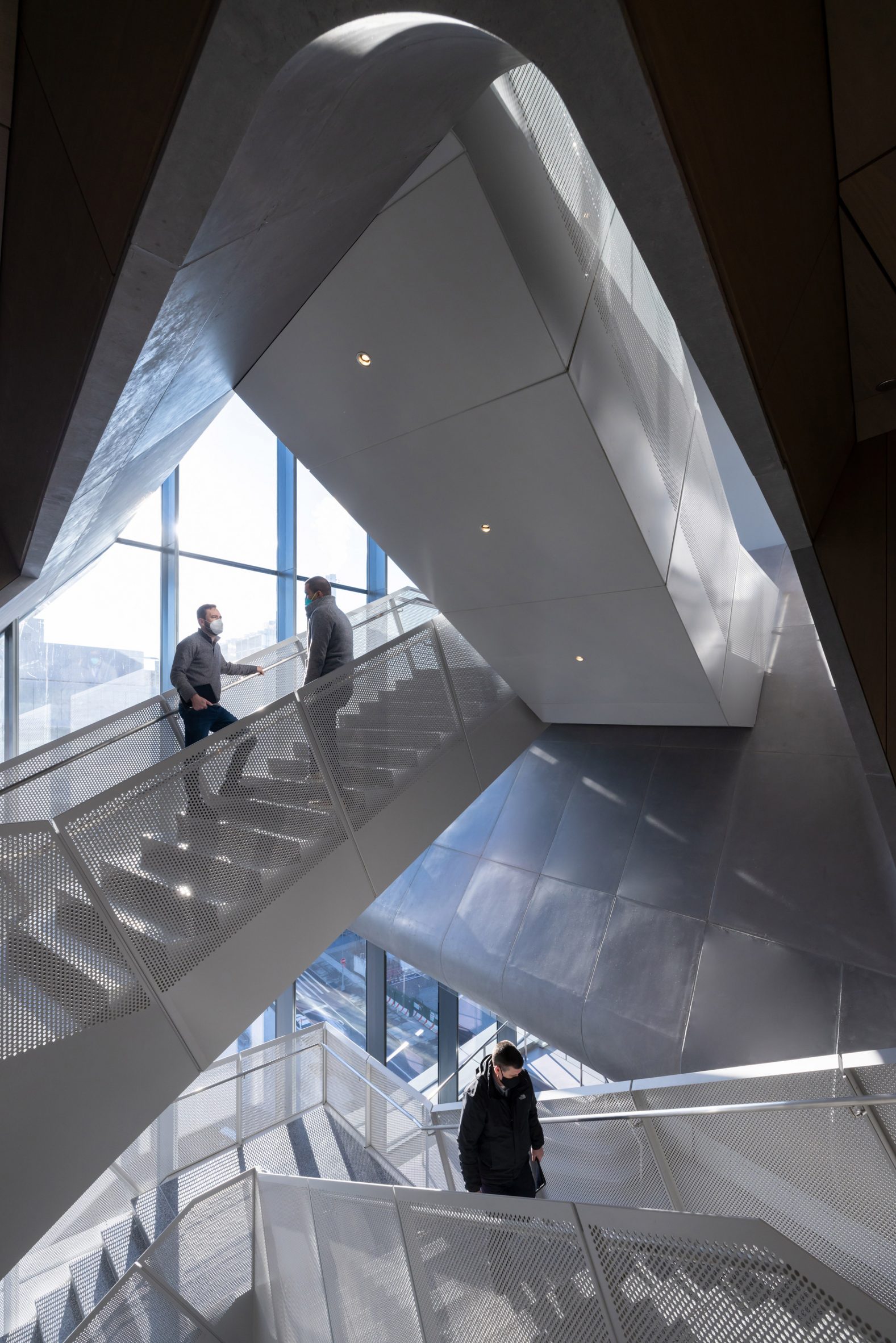 Stairways are also a prominent design feature inside Kravis Hall
Stairways are also a prominent design feature inside Kravis Hall
Geffen Hall is eight storeys tall and also has views of the Hudson River, while the rear exposure looks out into the neighbourhood of West Harlem.
Its storeys are offset with floor plates of varying thicknesses that emphasise the layering. A colour gradient in the glass stretches across each layer.
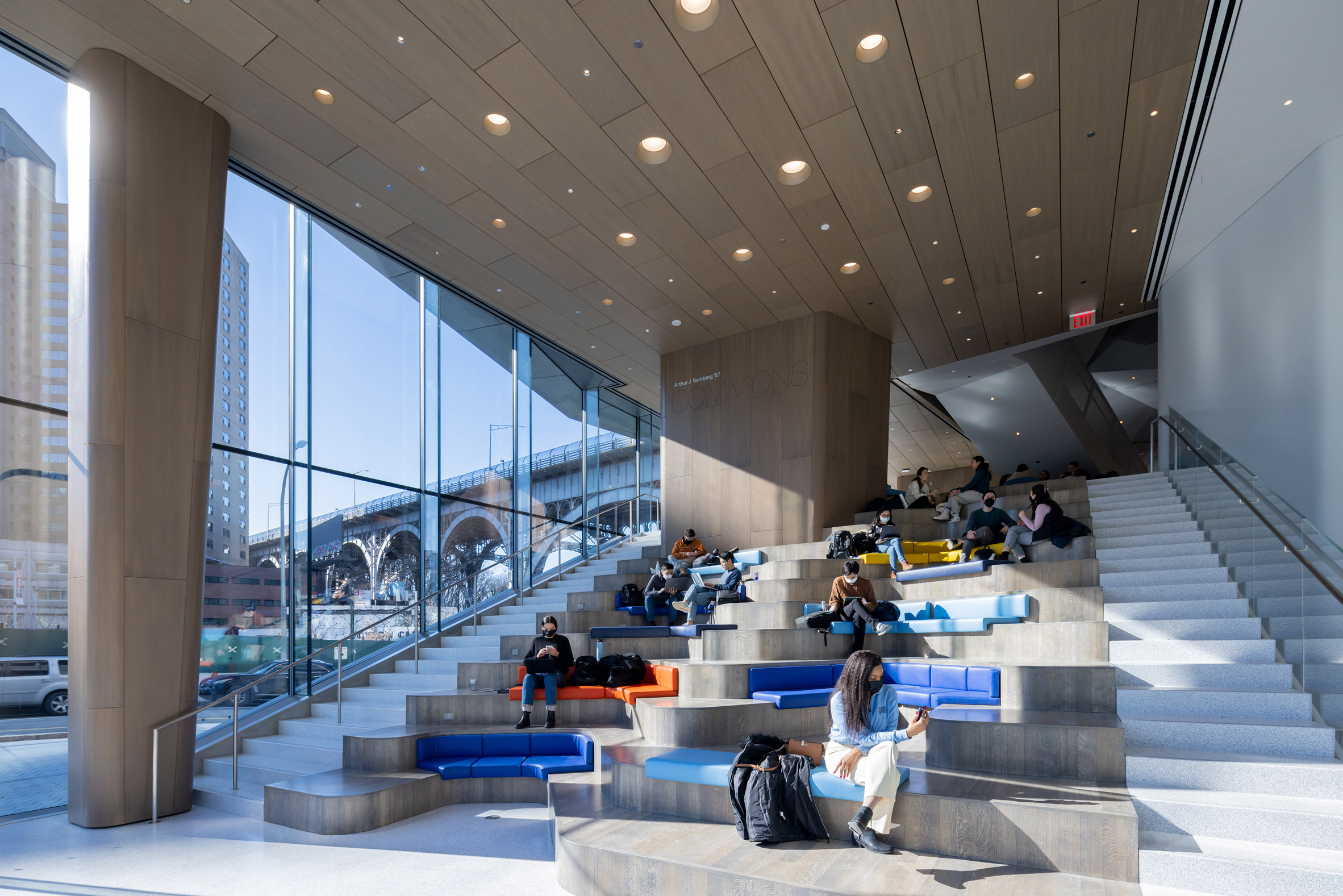 Samberg Commons is an auditorium on the ground floor of Kravis Hall
Samberg Commons is an auditorium on the ground floor of Kravis Hall
"Both set the stage for dynamic interactions between the University's different populations by shuffling faculty floors with student floors, made legible in each building’s syncopated silhouette," said Renfro.
Staircases in each structure open up the interior of the building. These "spiraling, sculptural circulation stairs" are meant to foster socialisation and interaction among students, according to the school.
[ 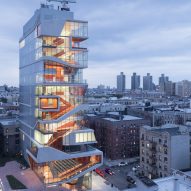
Read:
Iwan Baan photographs Diller Scofidio + Renfro's Vagelos Educational Building in New York
Skip-truss framing on the faculty floors of Kravis Hall allows for the student spaces to be open with relatively few columns dividing the space. Kravis hall has views of the Square and the Hudson River.
Though the building was designed before the Covid-19 pandemic, certain elements integrate the importance of telecommunications.
"Accommodating Columbia Business School's international community who joined remotely from all over the world was always part of the mandate and drove the core of the classroom technological development," said Renfro.
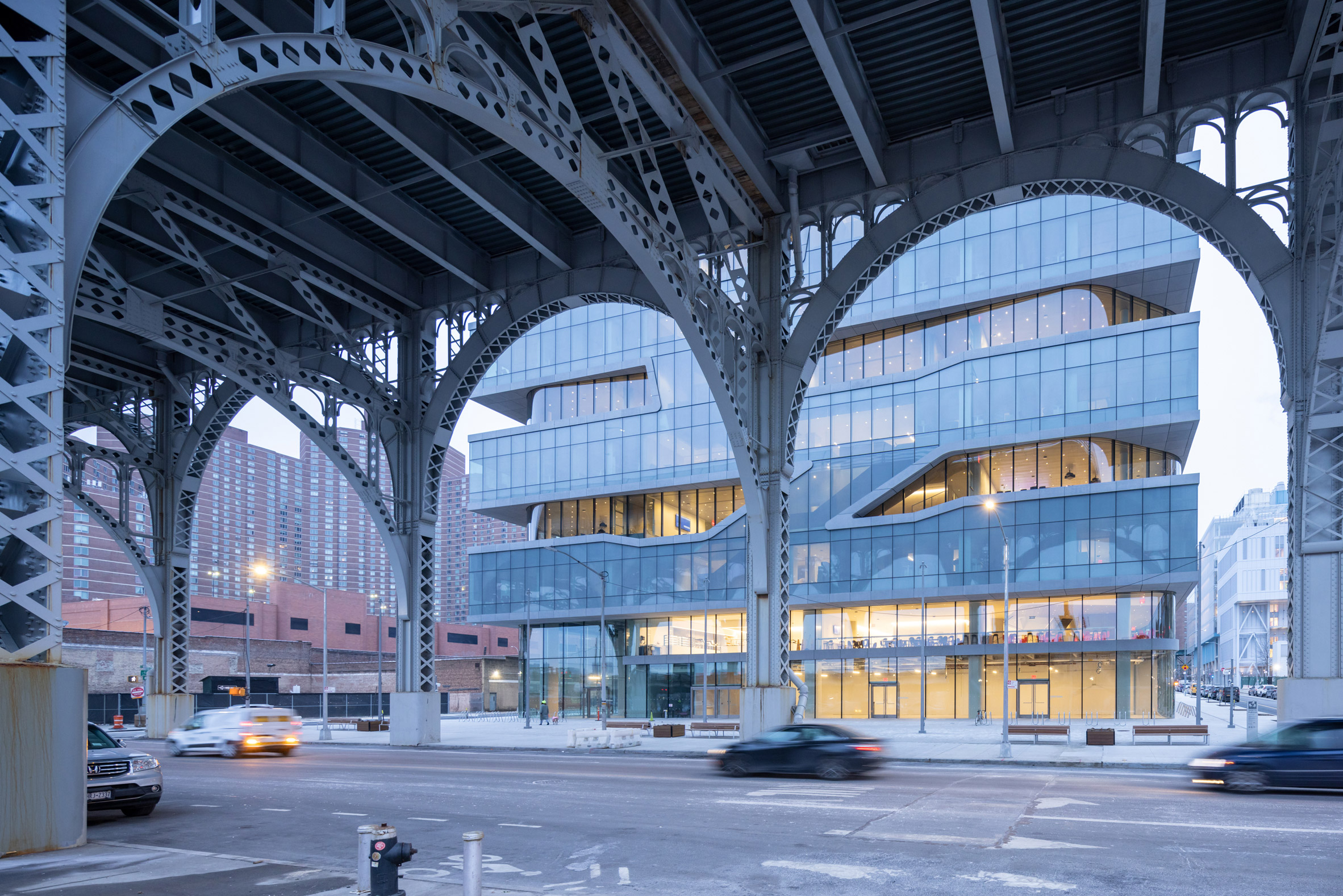 The buildings are located at Columbia University's Manhattanville campus
The buildings are located at Columbia University's Manhattanville campus
The ground floors of each building are mostly open to the public. Kravis Hall's Samberg Commons is an "urban-scale living room" with a multi-storey, tiered seating made of white oak.
Kravis Hall also has a dining room and retail space, while Geffen Hall features an auditorium that seats 274 as well as a public cafe.
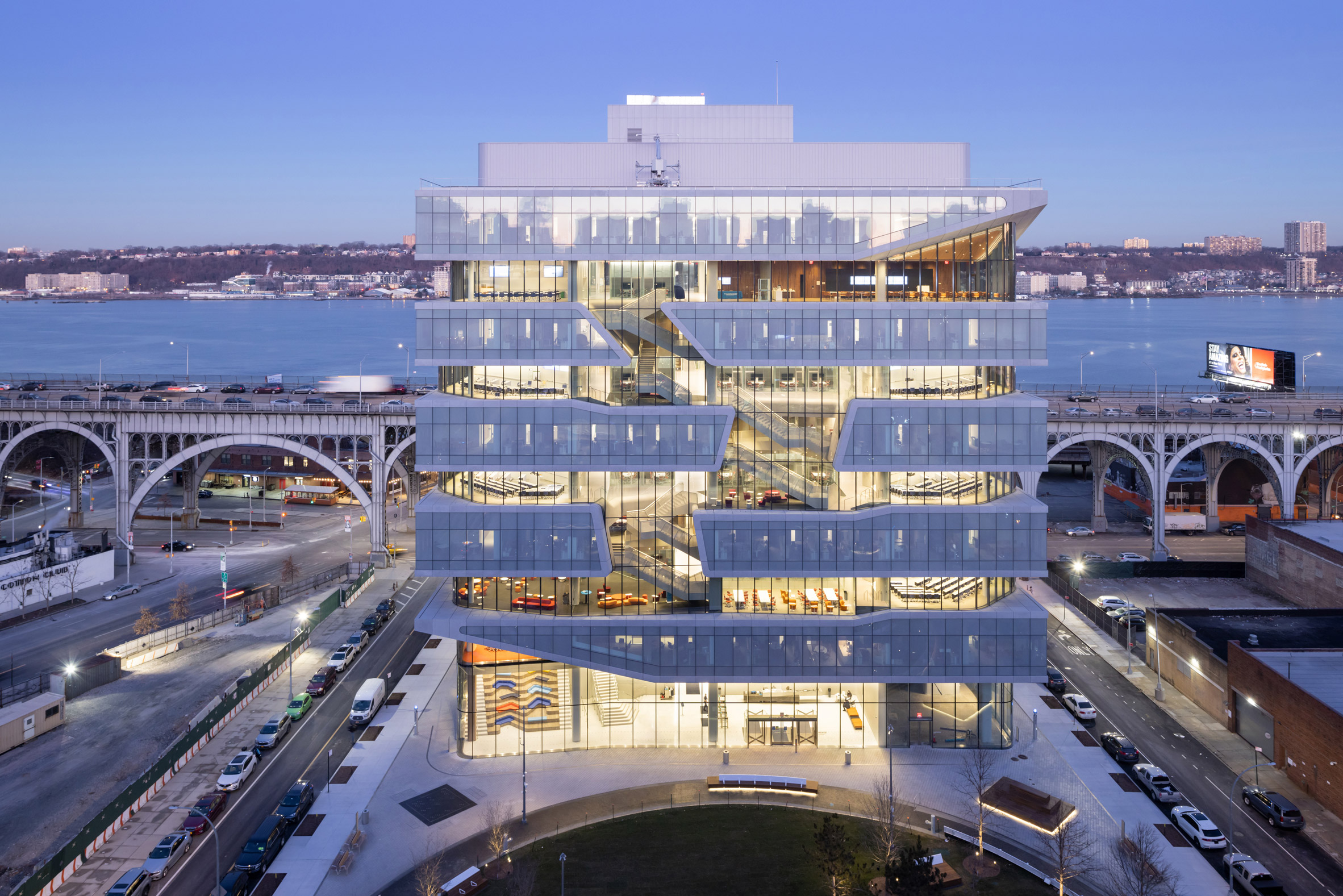 The expanded campus in Upper Manhattan was masterplanned by Renzo Piano Building Workshop
The expanded campus in Upper Manhattan was masterplanned by Renzo Piano Building Workshop
Sustainable elements of the designs include high-percentages of recycled content, and a majority of the wood was sourced from sustainable forests. The heating and cooling systems use "chilled beam technology" for underfloor heating in the tiered classrooms.
Other buildings on the Manhattanville campus include the Jerome L Greene Science Center, the Lenfest Center for the Arts and The Forum community centre – all by Renzo Piano Building Workshop.
Diller Scofidio + Renfro has previously completed a vertically organised medical centre for Columbia University.
The photography is byIwan Baan.
Project credits:
Architects: Diller Scofidio + Renfro in collaboration with FXCollaborative
Sustainability/ LEED consultant: FXCollaborative
Structural Engineer, Exterior Envelope and Façade Consultant: Arup
Associate Architect (Dedicated Dining, Multi-Function Room): Aaris Design Studios
Mechanical Engineer: Buro Happold
Construction Manager: Turner Construction
Lighting Design: Tillotson Design Associates
Acoustics: Cerami & Associates
Vertical Transportation: Van Deusen and Associates
Civil Engineering: Stantec Consultants
AV: Cerami & Associates, The Clarient Group, Jaffe Holden
IT: The Clarient Group, Jaros Baum & Bolles
Security: DVS Security Consulting and Engineering
Food Services: Romano Gatland
Cost Consulting: Dharam Consulting
Code: Milrose
Graphics and Wayfinding: Pentagram
Landscape Architect: James Corner Field Operations
The post Diller Scofidio + Renfro creates pair of Columbia Business School buildings with "layer-cake design" appeared first on Dezeen.
#all #architecture #education #iwanbaan #usa #dillerscofidiorenfro #columbiauniversity #newyorkcity #frittedglass #newyork
1 Shares
Estudio ALA designs El Perdido Hotel with rammed earth walls and thatched roofs
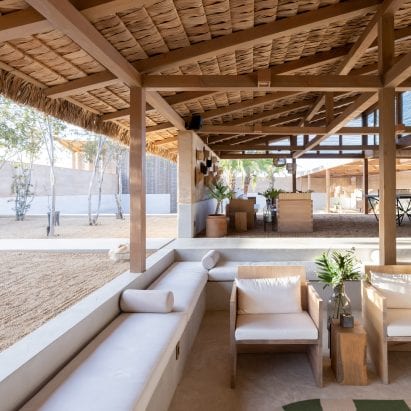
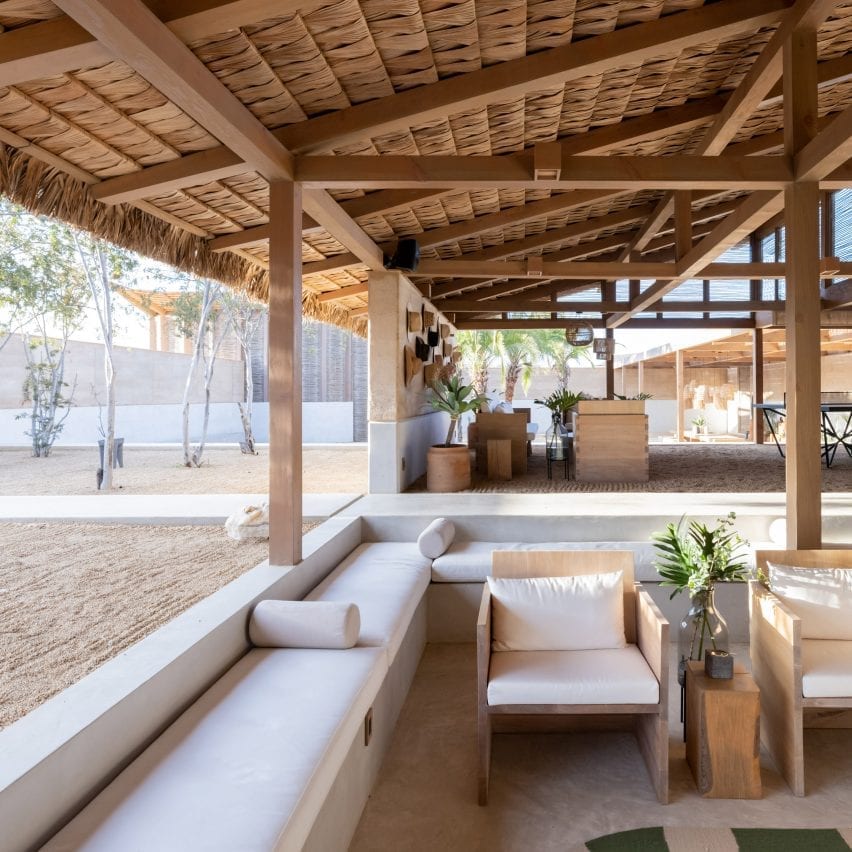
Estudio ALA used thatched roofs and rammed-earth walls for this hotel in Pescadero on the southern tip of Mexico's Baja California peninsula.
Located outside a small agricultural town named El Pescadero, the new El Perdido Hotel was recently completed by Mexican architectural office Estudio ALA.
It is located 800 metres from the Pacific Ocean amidst farmland that is used to grow basil, chillies, tomatoes and strawberries.
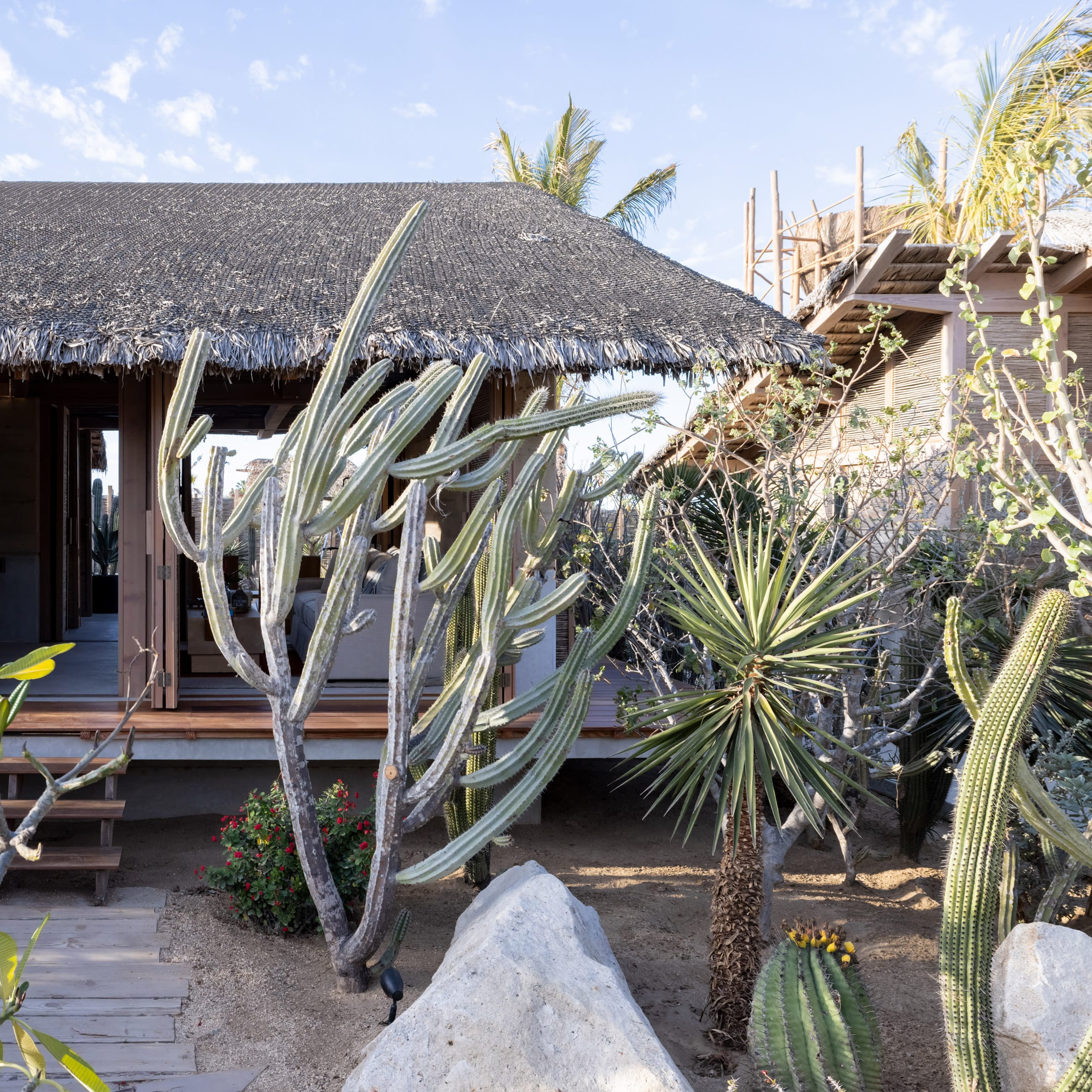 Some of the hotel's walls can be fully opened for cross-ventilation
Some of the hotel's walls can be fully opened for cross-ventilation
The hotel's stated goal is to foster the local area's way of life, so Estudio ALA wanted to use traditional construction techniques and materials.
"In a region where the corrosion of culture and tradition is being accelerated by rapid development, El Perdido embraces Baja California Sur's historical roots and material culture," said the practice.
"It provides a glimpse to the past while suggesting a potential design language for the future."
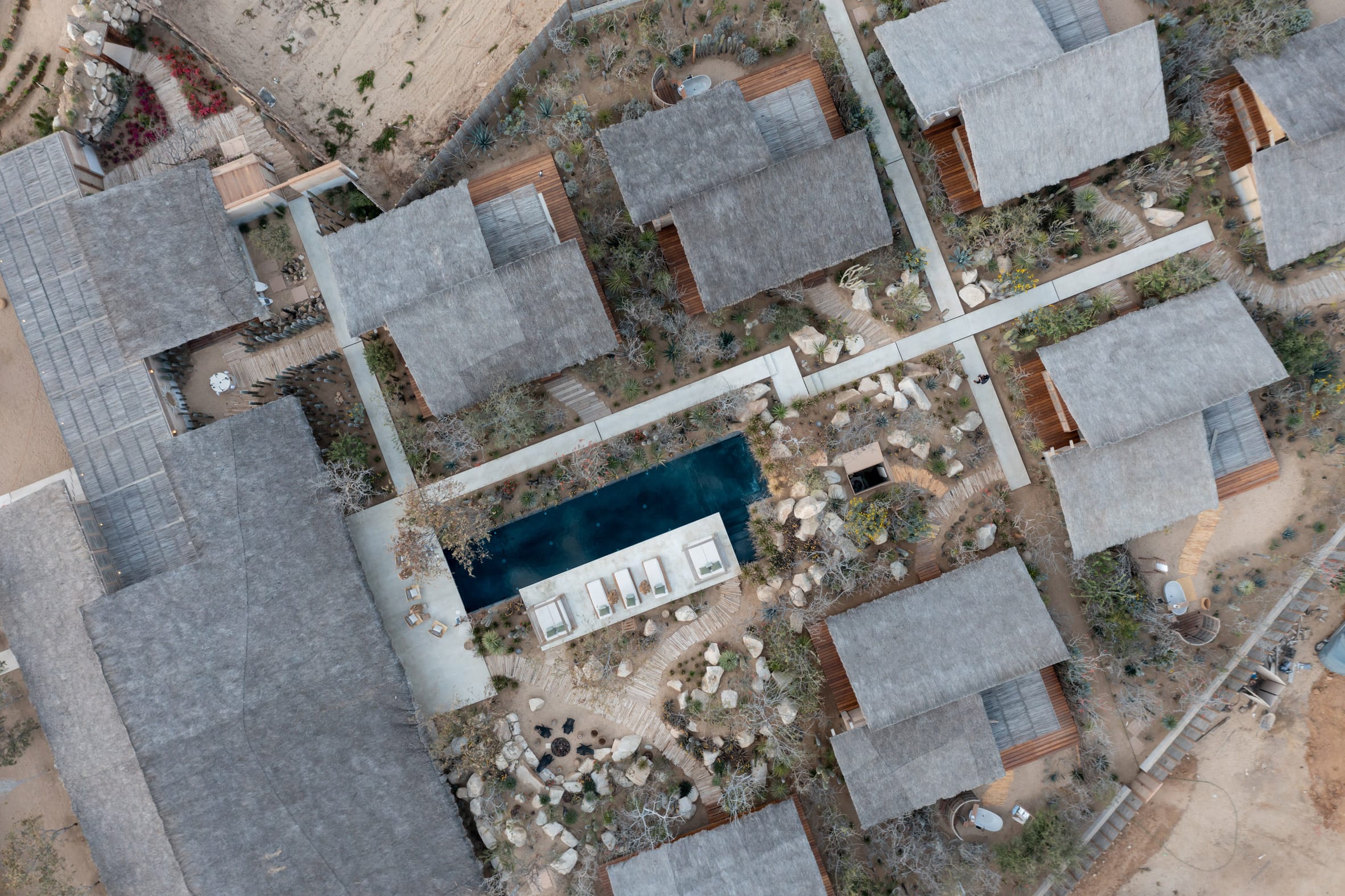 The architects employed local craftsmen and traditional building techniques
The architects employed local craftsmen and traditional building techniques
Rather than combine all of the hotel's rooms into a single building, the architects laid out guest quarters throughout the site.
They're laid out around a communal area, which includes the lobby and restaurant.
The smaller outbuildings feature rammed earth walls and timber-hewn roofs covered in thatch.
"This palette, typically disregarded in contemporary development for imported materials and tropical vegetation, is defined exclusively by locally sourced materials and built by local craftsmen," said Estudio ALA.
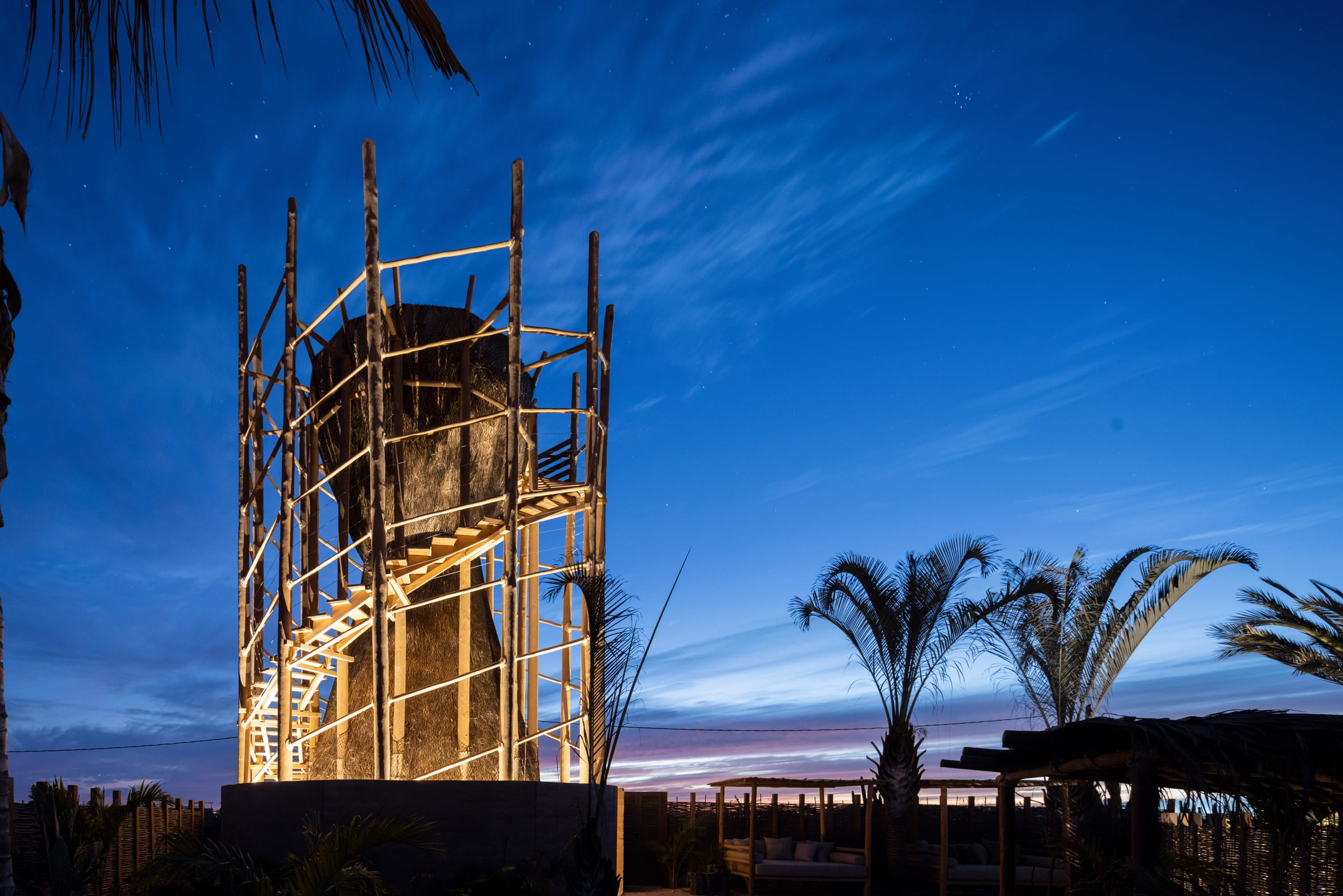 An observation tower forms part of the El Perdido Hotel complex
An observation tower forms part of the El Perdido Hotel complex
These contain the guest suites, which are appointed with their own lounge areas, a dining table, and kitchenette, making them feel more like standalone residential units than hotel rooms.
El Perdido Hotel's communal areas have no walls, allowing for natural ventilation and extending the functional spaces outdoors.
Between the buildings, local vegetation provides a lush backdrop to the pared-back and earthy interiors.
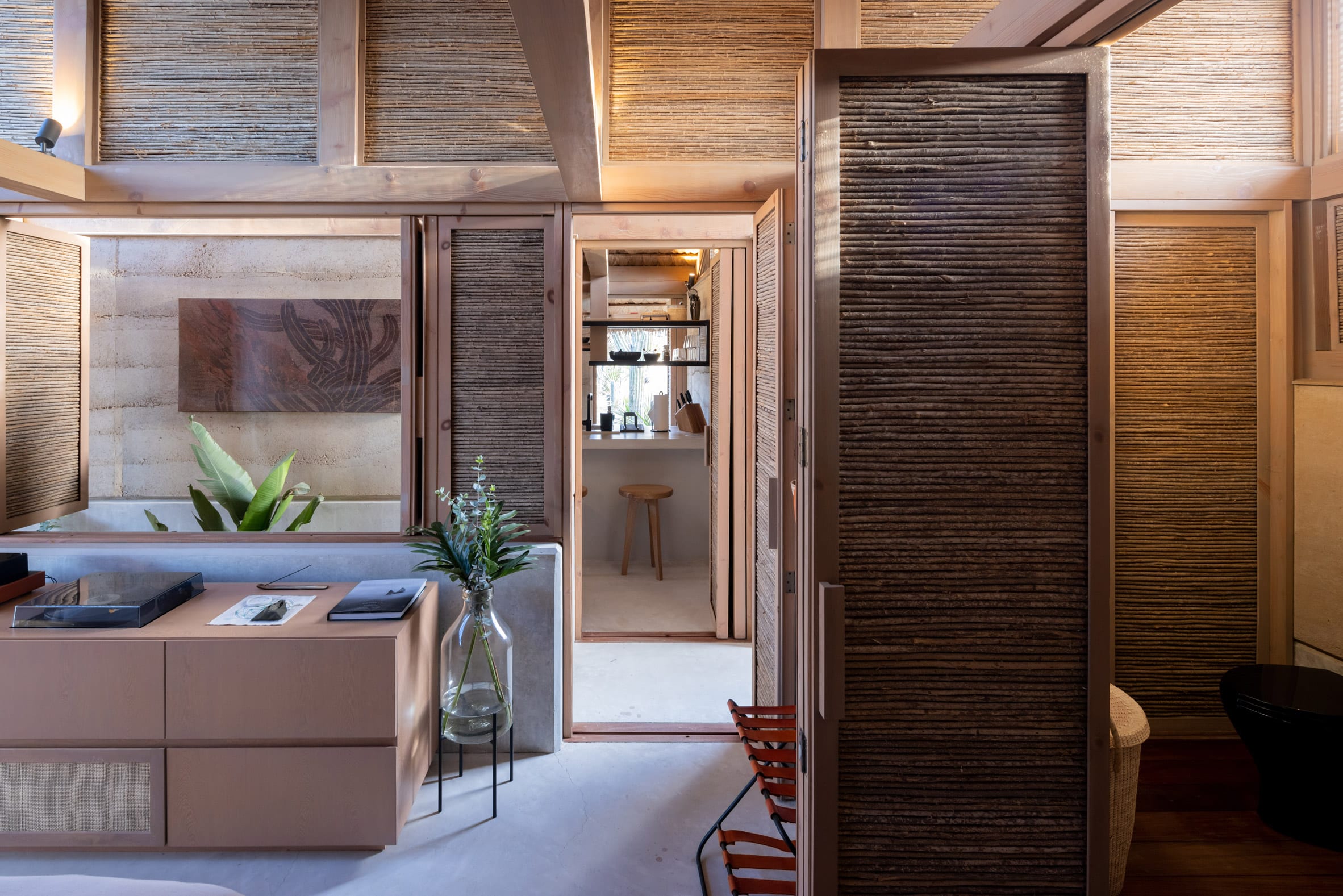 The architects used neutral tones and natural materials throughout the guest suites
The architects used neutral tones and natural materials throughout the guest suites
Other communal spaces include a sunken conversation pit with a water feature and a chapel. The interiors feature natural materials, leaving the massive timber frame exposed and using hand-made wood finishes.
A tall, hourglass-shaped structure provides a lookout point for guests to take in the surrounding landscapes and views of the Pacific Ocean.
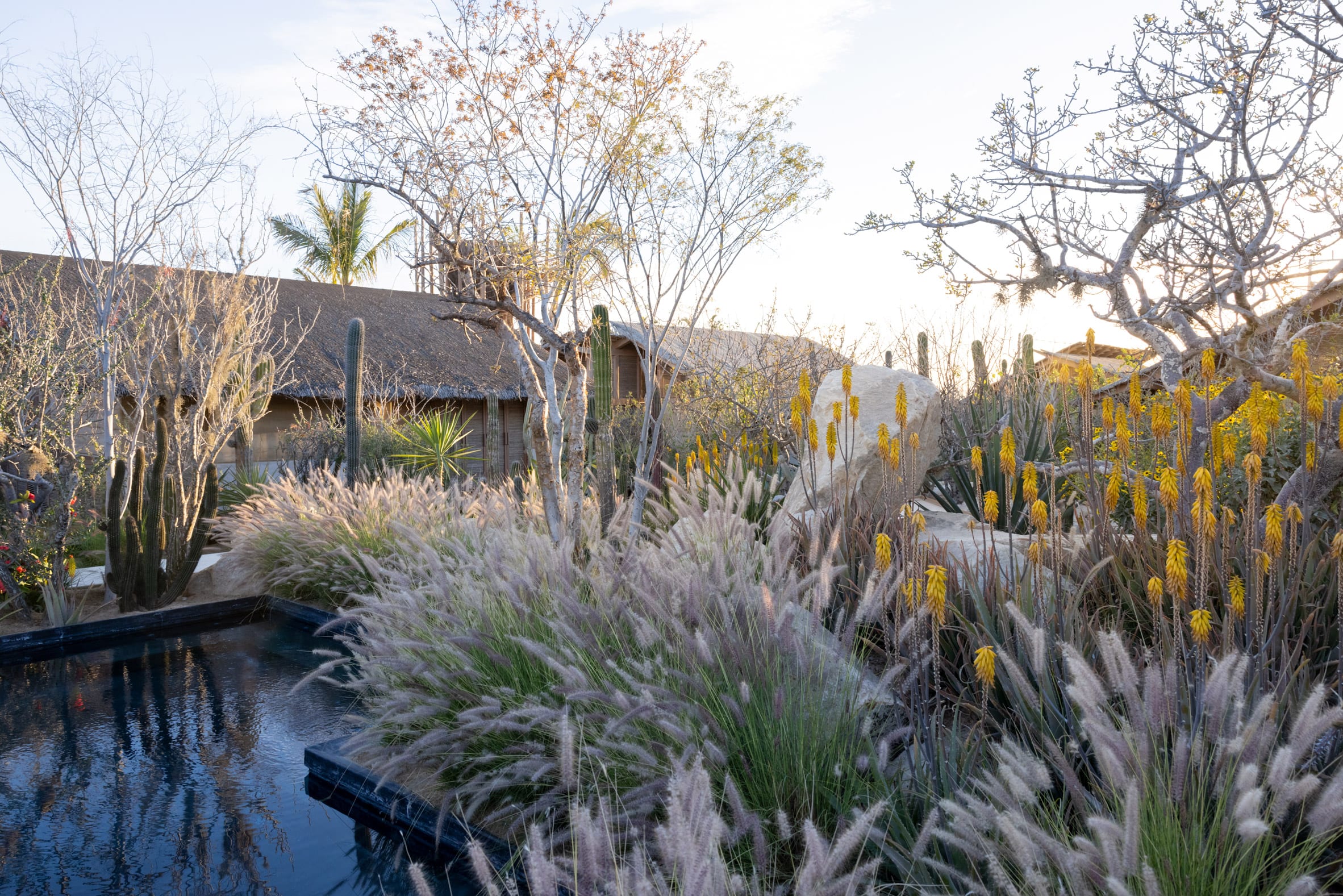 A shallow pond surrounded by local plants is a central feature of the landscape
A shallow pond surrounded by local plants is a central feature of the landscape
The landscape was designed to use exclusively endemic plants and cacti, which require less maintenance amidst the area's dry climate and the typical temperature variations of a desert climate.
"The buildings are configured to maximize efficiency while ensuring a constant dialogue between the interior space and the surrounding landscape," said Estudio ALA.
"The result is a permeable building where the limits between the indoor and the outdoor vanish," they added.
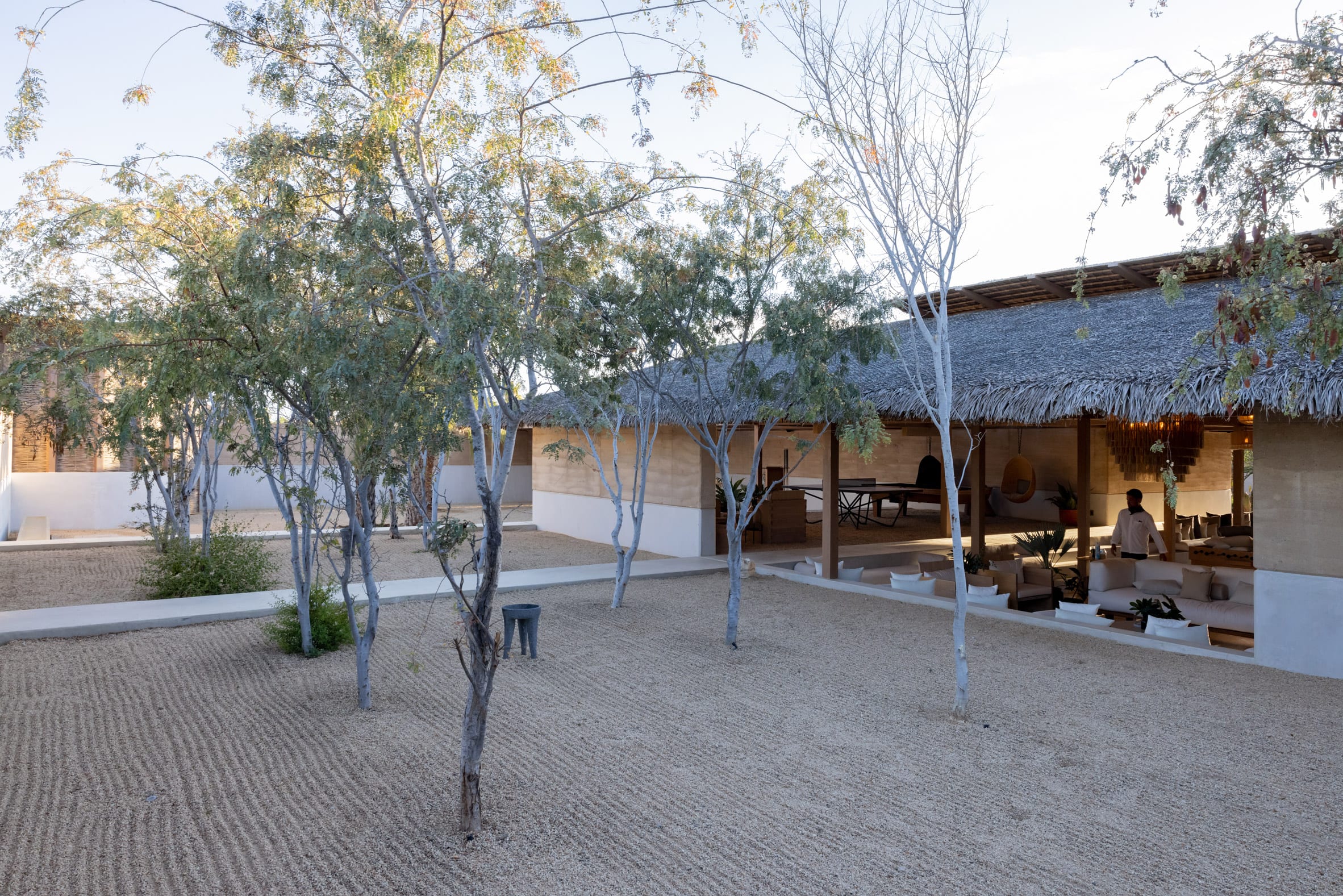 The architects extended the living spaces outdoors to make the most of the area's climate
The architects extended the living spaces outdoors to make the most of the area's climate
Estudio ALA was established in Guadalajara in 2012 by architects Luis Enrique Flores and Armida Fernández. They have also completed a minimalist chapel for the employees of a tequila factory in their city.
Other projects in the Baja California peninsula include a brutalist hotel with curved concrete walls by architects Ruben Valdez and Yashar Yektajo, and Nobu Hotel's first location in Mexico designed by WATG and Studio PCH.
The photography is byIwan Baan.
Project credits:
Client El Perdido
Architects Estudio ALA Luis Enrique Flores & Armida Fernandez
Landscape Architect Fletcher Phillips
Interior Design Lasal
Design Concept & Branding Jorge Martinez
Procurement Daniela interior design
Contractor Dylcor Construction
Jacales Wall Art Rodrigo Roji & Cristian Poire
The post Estudio ALA designs El Perdido Hotel with rammed earth walls and thatched roofs appeared first on Dezeen.
#all #hotels #architecture #iwanbaan #mexico #thatch #rammedearth #boutiquehotels
